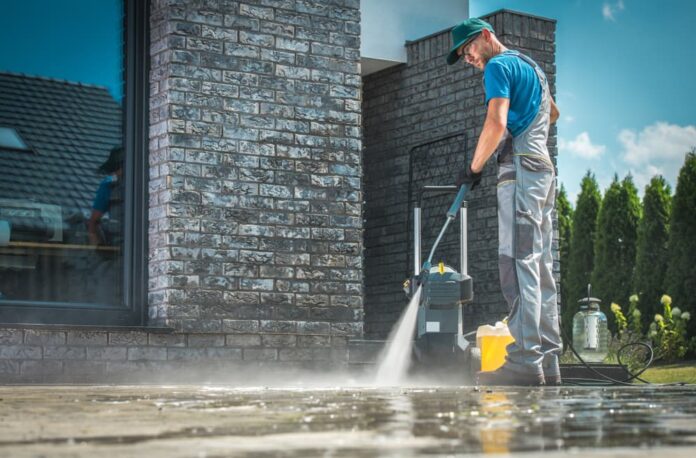Concrete exteriors look stylish and provide unmatched strength. However, despite their strength, they are prone to algae and fungus growth. Prolonged exposure to humid or moist conditions promotes the fungal growth of concrete.
Whether it’s a building’s exterior or a driveway, simple scrubbing brush and detergent don’t do the job right, hence, making pressure washing an effective solution. But, improper implementation of the standard procedures results in a poor clean.
Choosing the Right Washer
The first and foremost thing is choosing a concrete pressure washer. There are different types of pressure washers for various applications. Since concrete is strong than other building materials, it requires a high-powered gas washer.
Although, electric washers work well for concrete washing projects. But it is very time-consuming.
The Pressure Required
Concrete washing needs high-pressure-producing nozzles. When cleaning concrete, pick a nozzle that produces at 3000 PSI and allows the Max Flow of 4 GPM. A 3000-PSI nozzle is sufficient for most concrete cleaning projects. However, tough stains require more pressure.
Brushing Away the Dirt
Wetting the dry dirt on a concrete surface only increases the work. Hence, before you begin washing a concrete surface, brush away the dirt. This also prevents debris from flying around during the wash.
Using a Cleaning Detergent
Sometimes the stains or the dirt remains after the washing is complete. This happens due to a weak cleaning agent. Since concrete is difficult to wash compared to other materials, you need a heavy-duty detergent.
Using an all-purpose cleaning is the best solution to get nasty stains clean. Spray the detergent from 8 inches away to form a lather. Let it sit for 10 to 12 minutes, then rinse. Moreover, you can also use a rotating nozzle to clear the dirt in the cornering areas.
Positioning the Wand and the Nozzle
There is a common misconception of using a high-pressured for concrete cleaning. Avoiding high pressured nozzles on the concrete surfaces is important, as it causes etched marks on the surface. Therefore, it is always better to buy a nozzle with adequate pressure.
Slightly tilt the wand to flush out the dirt rather than peeling off the surface. Also, pointing the wand at sharp angles will result in debris flying and causing injury.
Vertical surfaces don’t require high pressure as compared to horizontal cleaning. For heavily matted concrete tiles, you need an output of 4 to 6 GPM.
Wearing Safety Clothes
Safety comes first is an old saying and, it stays fit for concrete washing as well. Wear safety glasses, a safety suit, and fully covered shoes to prevent skin injuries. Also, if you have plants or doors surrounding the surface, cover them with a plastic sheet.
Using a Concrete Sealer
Once the washing is complete, you will notice tiny pores on the floor. These pores, if not sealed, will begin to accumulate dirt. Hence, demanding frequent washing. To prevent this, use a concrete surface concealer.
It is like transparent paint and fills the pores to prevent dirt accumulation. Moreover, it maintains a clean look for a long time.
Conclusion
Pressure washing your concrete house exterior or driveway isn’t that much of a challenge. However, if you are not careful, you may end up etching lines.
Therefore, the above points describe everything which sums up to an effective clean. Always remember to ensure your safety. Never use a pressure washer without complete precautionary steps.










